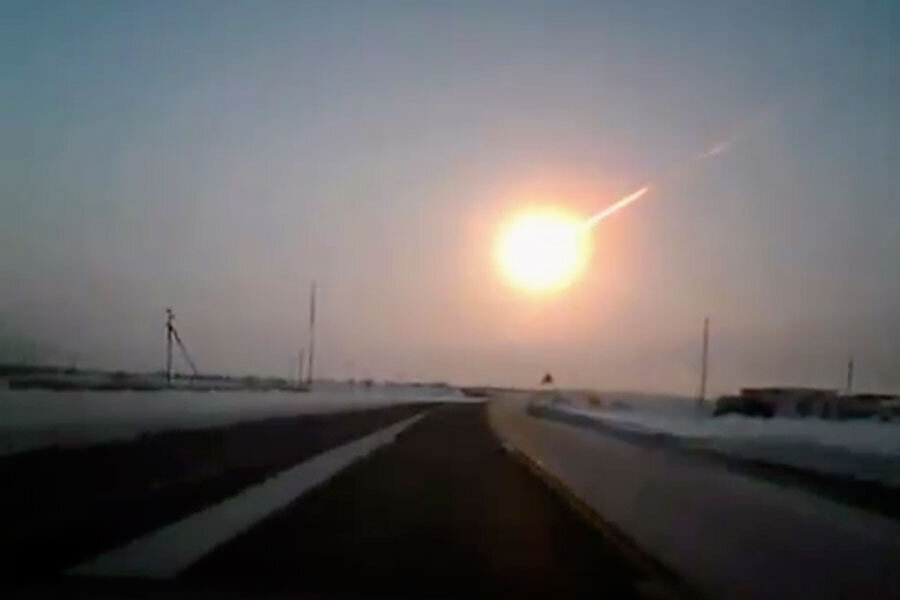How likely are you to get hit by a meteor?
A small blue object dropped from the sky in southern India over the weekend and crashed into the ground, shooting out debris that killed a bus driver standing nearby.
Local officials are conducting a chemical analysis of the object, which landed at an engineering college near the city of Vellore, to determine whether it is a meteorite, a chunk of a satellite, or other space debris.
A much bigger meteor, the size of a bus, caused havoc in 2013 when it shot in a fiery blaze over the Russian Urals city of Chelyabinsk, exploding several miles above the Earth with a blast that shattered windows, damaged buildings, and injured 1,600 people.
"My ears popped, the windows in our building are smashed, everyone says an airplane exploded. My cellphone stopped working for a while," said one witness to the Russian Ekho Moskvy radio station.
Incidents like these are rare, but they do raise the question: What are the chances of being struck by debris from a space rock that burns through the Earth’s atmosphere and crashes to the ground – or blows up in mid-air?
After all, a massive asteroid or comet plummeted to Earth and wiped out the dinosaurs some 65.5 million years ago.
The chances of a catastrophic event are very low, though space debris strikes Earth every year, almost always with no damage. Only a handful of meteorites have even damaged property, and prior to this weekend, there were no records of a meteor impact ever killing a human.
Nonetheless, Tulane University environmental sciences professor Stephen A. Nelson has calculated the odds of getting killed by a meteorite at about 1 in 250,000.
According to Dr. Nelson's statistics, murder (1 in 185), tornado (1 in 60,000), flood (1 in 27,000), and airplane crash (1 in 30,000) are much more likely killers. By comparison, the chances of winning the PowerBall lottery are 1 in more than 195 million.
Fortunately, NASA keeps tabs on these extraterrestrial menaces. The agency’s Planetary Defense Coordination Office monitors space debris that could potentially come close enough to cause damage.
NASA has identified more than 13,500 asteroids or comets of all sizes circulating within 30 million miles of Earth’s orbit. About 1,500 pieces of space debris are detected each year, says the agency. They track the risk posed by different comets and asteroids. So far, none present any measurable threat.
“The probability of an asteroid striking the Earth and causing serious damage is very remote but the devastating consequences of such an impact suggests we should closely study different types of asteroids to understand their compositions, structures, sizes, and future trajectories,” says NASA.
The space agency’s goal is to keep track of the space junk near our planet using ground-based and space telescopes, and to alert government disaster agencies if an object looks likely to strike. In the long term, says the agency, its goal is to defend the planet from extraterrestrial intrusion with technology that can knock asteroids off their course towards Earth.
In the meantime, experts urge people not to stress about getting hit by meteorites, which is as useless as worrying about getting struck by lightning (chances are estimated at 1 in 135,000).
"We live in a solar system that's full of asteroids and meteorites. There's no avoiding them. Thousands of tons of meteorites fall onto the Earth every year, far more than we can even keep track of. So, try not to worry too much," said Nikolai Zheleznov, a senior researcher at the Russian Academy of Sciences in Moscow.







